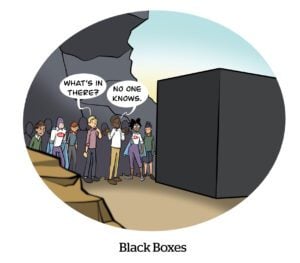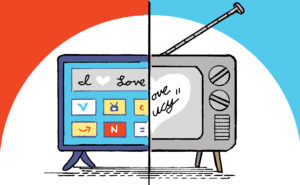Google and Amazon compete for people’s time and wallets, and for advertisers’ budgets.
And on Wednesday, they both kicked off their marketing industry conferences and announced a round of big ad tech news focused on how they’re trying to differentiate their offerings to the industry.
Here’s a breakdown of the important takeaways from Google Marketing Live (GML), Google’s biggest annual event for its own advertisers, and from the Amazon Publisher Services (APS) Summit, Amazon’s conference for supply-side ad tech and publishers.
Google’s all in on AI
Artificial intelligence was, unsurprisingly, at the heart of almost all of Google’s updates from GML, which it hosts from its Mountain View, California, headquarters.
New inventory is opening in Google’s AI-based channels. And AI Overviews (AIOs), Google’s auto-generated search responses, will now show ads on desktop, not just mobile. Google will also begin serving ads within its AI Mode, which is the Gemini search portal that’s just AI-generated responses, leaving the old Google Search response page behind.
The new AI Mode answers mean search users are “going beyond information to intelligence,” writes Vidhya Srinivasan, VP and GM of Google Ads and Commerce in a blog post announcing the updates. “And as people search, ads help them take the next step.”
Srinivasan also introduced a new agentic chatbot solution primarily for smaller businesses that don’t have their own enterprise AI models and data capabilities.
To take advantage of the new consumer AI search impressions, though, Google advertisers must buy in to the entire suite of Google AI enterprise ad products. Businesses that want to appear in the AIO ad units or in AI Mode ads once those launch need to use Performance Max, Shopping and Search campaigns with broad match. The broad match search setting gives Google’s platform greater license to target keywords or searches that the advertiser account hadn’t preset for targeting or wouldn’t think to use.
It would be strange if Google required search advertisers to, say, turn on YouTube campaigns with the settings most preferable to Google’s business in order to appear in Google Search ads. Or if it required advertisers to agree to serve ads to a channel like Google Search Partners that they aren’t actually interested in. It perhaps would even trigger antitrust inquiries.
But with the new AI-backed ad product suite and AI-generated ad inventory, Google is pushing all of its properties together in new ways.
Google’s AI shop
Google is also creating new shoppable video ad units that could appear in shopper-related queries. Some products benefit by having a chance to display a bit of sound and motion, like to show how a coat or dress hangs on a model or to demonstrate easy product assembly.
Srinivasan also announced that Google is building a marketing chatbot that “lives right inside the Chrome browser.”
The chatbot will analyze the sites and pages under that business’s purview to understand how different parts of a portfolio work together, or automate the manual process of tagging pages and collecting tag data.
“It’s particularly helpful when working across Google properties – like Google Ads, Help Center, Google Analytics and within websites and CMS systems – giving it the ability to help diagnose problems with campaigns or uncover new growth opportunities,” wrote Srinivasan.
Amazon’s sell-side suite
Amazon’s big news from the Amazon Publisher Services (APS) Summit in New York city on Wednesday focuses on the supply side, rather than tools explicitly for advertisers. Amazon continues its commitment to offloading manual campaign work to AI tech and in tying together its vast media and ad tech empire. And Amazon is continuing its effort to place more video ads throughout its properties.
Amazon’s data clean room solution for publishers, called Amazon Publisher Cloud, will now extend to all online video ads, not just CTV and streaming. Though only the Amazon DSP is able to bid on those placements, since the data clean room leverages Amazon’s first-party ad retail purchase data and thus isn’t open to any third-party vendors.
Amazon also debuted a new ad format design product for publishers called Canvas, which site owners can use to create native formats without any developer work. Some of those “ready-to-use, high-engagement formats” include page overlays, full-page ad units and adhesion units (those video ads that track up and down as someone scrolls a page).
“In today’s rapidly evolving digital advertising landscape, publishers need tools that not only drive substantial revenue growth, but also streamline operations and elevate consumer experiences,” Scott Siegler, global head of Amazon Publisher Services, said in the release.
Google likewise framed its updates, including the expansion of ads in AI-generated search responses, as a consumer experience upgrade.
Of course, platforms like Google and Amazon often use metrics like whether particular ad units are more lucrative or clicked-upon as a proxy for user preference and satisfaction with their service. Some publishers likewise might interpret earning more per page as a measure of reader or audience satisfaction with their media.
Amazon analytics
Beyond AI, Amazon introduced a new set of analytics tools for publishers to better understand their demand sources.
Signal IQ, an identity management for programmatic publishers that launched a year ago, will be juiced with new metrics useful for publisher yield execs.
The initial value prop for Signal IQ was as a way to manage and distribute different alternative IDs – including The Trade Desk-backed UID2, LiveRamp RampIDs and Yahoo’s ConnectID. Now, publishers will be able to see how these different ID integrations affect incoming bid rates, eventual CPMs and overall revenue from specific identity integrations, which can lead to “varying ad prices for the same space.”
















